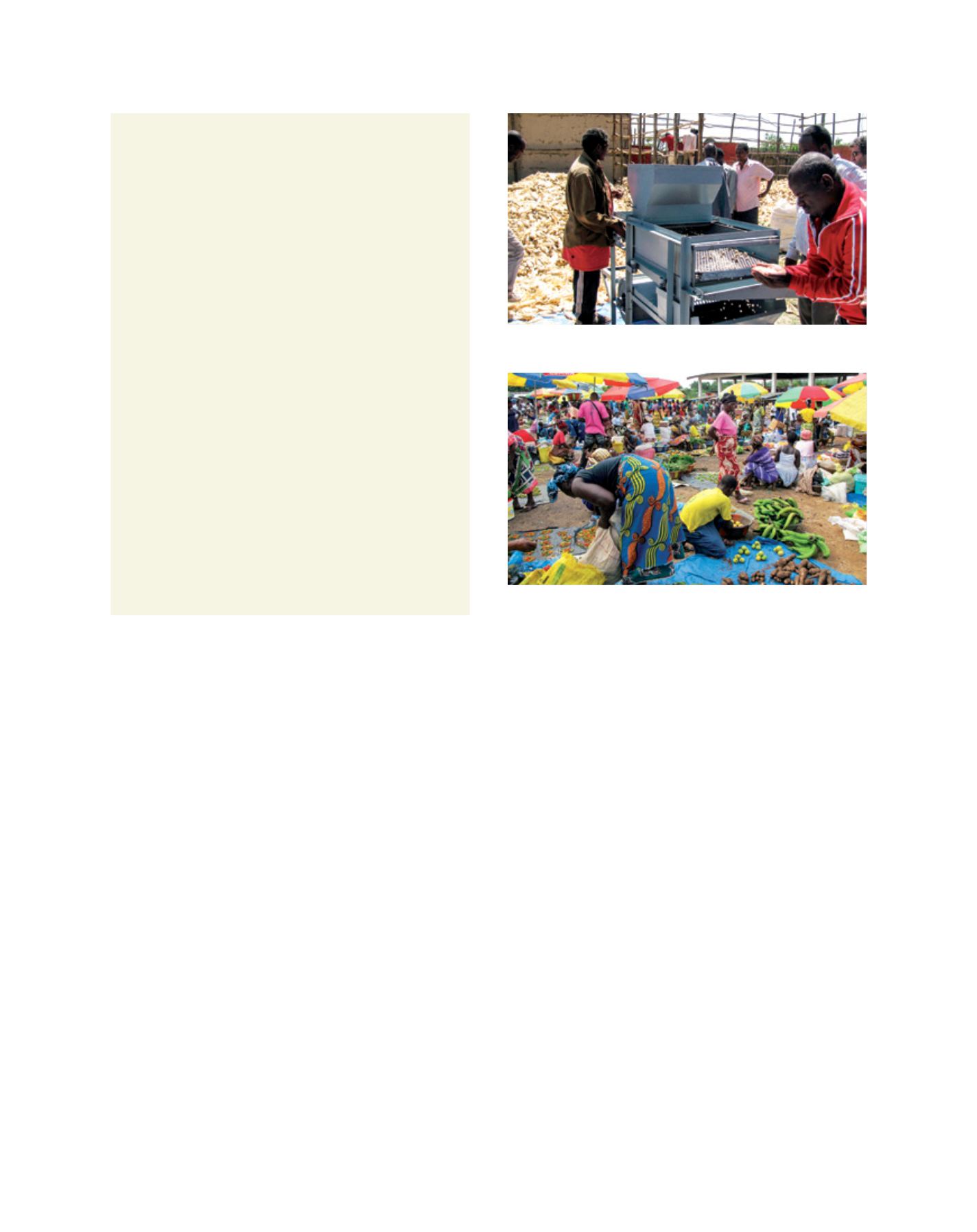

[
] 200
Farmers’ organizations in a fruit-producing
region of Armenia
For centuries, Armenia’s Meghri region has been famous for
producing high quality persimmons, pomegranates and figs. The
region’s sub-tropical climate is perfect for growing, and consumer
demand for these fruits is high. But the collapse of the Soviet Union
and a lack of investment in agriculture has meant that many local
farmers have been unable to maximize their potential.
A key challenge for farmers has been the difficulty of accessing
agricultural supplies such as fertilizers and pesticides. Most have
to be purchased in Yerevan, and the small size of Meghri’s farms
means that farmers have little bargaining power, and often have
to pay high prices for supplies. Being aware of this challenge, SDC
encouraged farmers to get together to bulk-buy supplies. After only
a few years this measure has led to a reduction of about 20 per
cent in the price paid at farm level.
The same farmers’ organizations were also instrumental in selling
the fruits: wholesalers and supermarket chains are much more
willing to buy in bulk than to bargain with individual farmers for
small amounts of produce. In this way the farmers’ organizations
opened new markets to Meghri’s small family farms. Even better,
the fact that there is a functioning market for fruits attracted new
investments to the region. A local fruit processing plant now plans
to expand for producing a new variety of fruit juice, and this will
increase the possibilities for famers to sell their produce.
In the future it is envisaged that input suppliers will set up shops
in the region so that farmers can buy directly from them. A good
indicator that this could be successful was a two-day agricultural
fair organized with the help of the project in Meghri town. It was
attended by 250 farmers and 10 wholesalers of agricultural
supplies. Five wholesalers sold their products at the fair, and the
interest of the farmers and the level of sales were far higher than
the suppliers had expected.
overcome these challenges and to lobby for policies, regula-
tions and investments to realize the potential of family farms.
Access to services and markets
The most frequent reason for farmers to get organized is to
jointly market or process a common product such as milk,
fruits or grains and to access inputs as well as information
and financial services for its production. Due to the small
size of most family farms in Africa and Asia they face higher
transaction costs and lack negotiating power. Considering all
farms worldwide, 73 per cent are of less than one hectare
and 95 per cent cultivate less than 5 hectares of land. But the
estimated 500 million family farms located in Africa and Asia
are sustaining the livelihoods of about 2 billion people and
providing food to at least half the world’s population.
On the input side, service-providing farmers’ organiza-
tions bulk-purchase agricultural inputs and resell them to
members at a favourable price. On the output side they bulk-
produce and benefit from lower transaction costs and higher
bargaining power in sales. Farmers’ organizations also play
an important role in the provision of information to family
farms. As a group it is easier to access information on new
production technologies, new crop varieties or approaches for
sustainable natural resources management.
In production, family farms still rely heavily on manual
labour. While locally adapted mechanization would be available
on the market, this is not affordable for individual small enti-
ties. Labour in rural areas is often scarce due to increased rural
urban migration, a lack of interest among youth in farming and,
in some regions, a diminished workforce due to early death
caused by conditions such as HIV-AIDS. In a post-harvest
management programme in Ethiopia for example, it was a local
farmers’ organization that enabled the farmers to buy modern
threshing equipment that makes threshing easier while also
reducing losses of maize due to spilling and damaging grains.
Sustainable use of natural resources
Farmers’ organizations are essential for the definition of regula-
tions for the sustainable use of natural resources. Family farms
in many cases use common natural resources such as pasture
land, forests, lakes or rivers and often lack legally recognized
and secured access to these resources, which form the basis for
their production and livelihoods. Unsecured access to natural
resources discourages investments whose benefits – for example
trees or works to halt erosion – only occur several years after
the investment. Furthermore, unsecured land tenure rights
inhibit the use of land rights as collateral for credit. In areas
with increasing population pressure, unsecured tenure rights
also lead to the overuse of the resource and to conflict in society.
Farmers’ organizations can play a regulative role and act as
the first level in conflict mitigation. In Mongolia for example,
Switzerland is supporting pasture user groups to sustainably
manage state-owned and free-to-use pasture land. In this de
facto open access situation where each herder tries to maxi-
mize his or her animal production, the natural resource base is
put under heavy pressure and is strongly overused, particularly
Local farmers’ organizations can enable farmers to buy modern, labour-
saving equipment that reduces losses through spillage and damage to crops
By bulk-selling produce, farmers’ organizations can open up new markets
to small family farms
Image: Markus Buerli, SDC
Image: Séverine Weber, SDC
D
eep
R
oots
















